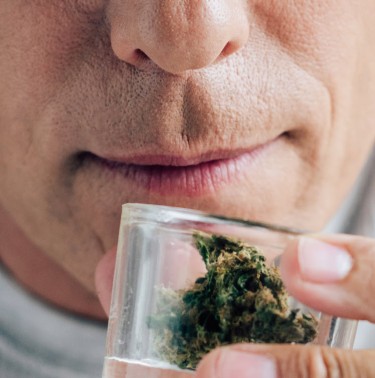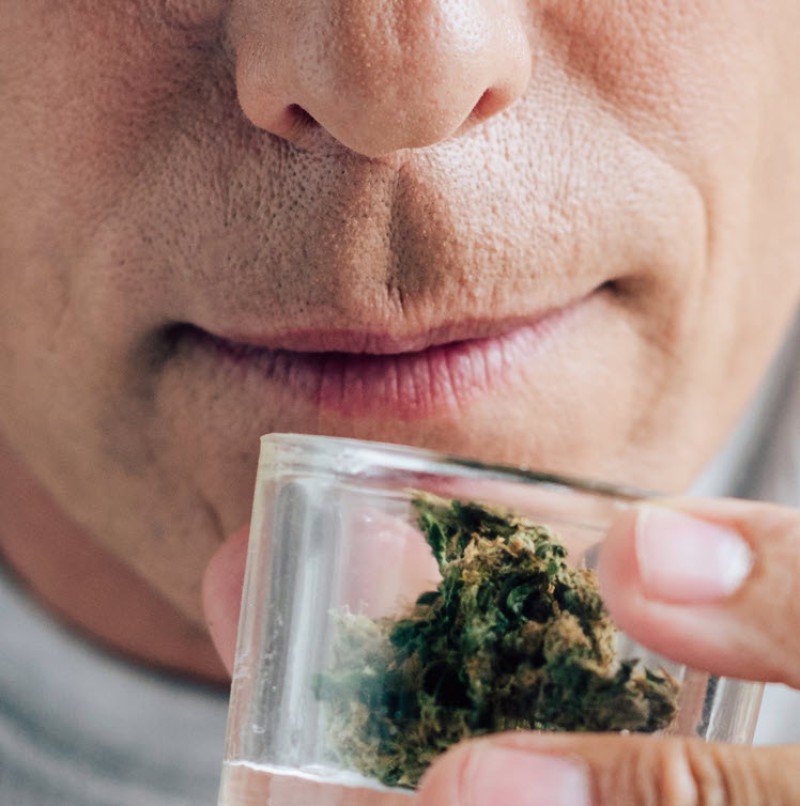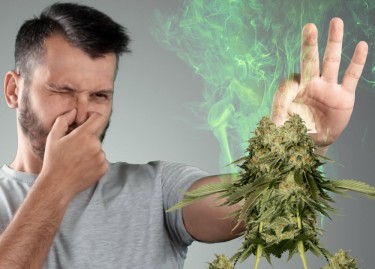
The aromatic scents of cannabis flowers are usually the first to hit you once you pull it out of its packaging. One of the fun aspects of buying cannabis is getting to open the bag and burying your nose to inhale the sweet or skunky aroma of your flowers.
Generally, cannabis has dozens of scents, thanks to its rich terpene profiles. These terpenes combine to create a heady space of magical odors with notes of funky cheese, diesel, lavender perfume, fresh pine, tropical pineapple, sweet berries, citrus, and many others. One thing about inhaling these unique combos is that you feel afloat.
Have you ever attempted to distinguish cannabis strains by their scents? Or at least differentiate indica from Sativa-dominant strains by their aromas? Without considering their smells, modern Sativa and indica cannabis plants are getting harder to discern. This might come easy to a regular user of both strains and hybrids. However, for a new cannabis newcomer, it could look like muddy waters.
The general claim is that Sativa strains smell sweet and fruity while indica strains smell grassy and earthy. On the other hand, if it's a mixture of these scents, then it's a hybrid. Let's explore how true this notion is.
Differentiating Indica and Sativa Plants
If you're wondering if there's scientific research to differentiate these two, I'm here to tell you there isn't. Cannabis research is focused on other aspects than figuring out a way to distinguish between indica and Sativa plants. Not to mention the long-standing federal prohibition on the drug across the United States. I can imagine that when scientists are finally ready to differentiate between indica, Sativa, and hybrids using their scents, dozens of people will line up to be a part of this remarkable study. However, we're still months away from this research.
While the focus right now is on differentiating both variants, it's no question that the plants being to each group appear different. While Sativas are thin, tall, and located within tropical climates like Hawaii and Mexico, Indica plants are squat and short. They are commonly grown in central Asian regions like Afghanistan and Pakistan. If you notice a cannabis plant with dense buds and broad leaves, it is an indica, while one with spindly buds and thin leaves is a Sativa.
Speaking about effects, some consumers are starting to raise an argument that the difference between indica and Sativa effects is closing as more strains get cross-bred. They point to the increasing rate at which both strains are being mixed as the sole reason for this. Before, everyone believed that Sativa strains were for the head, while indica strains lead one straight to the bed. Today, this narrative is being pushed against.
Now that you have all that in mind, we can delve into the aromas of cannabis plants and the compounds responsible for these unique scents, terpenes.
Terpene effect in Sativa and Indica
Terpenes are naturally occurring oils produced by plants. They give plants their unique smells and flavors. Each cannabis plant has individual terpene profiles, partially responsible for their induced effects when consumed. Common terpenes include limonene, pinene, linalool, caryophyllene, etc.
Sativa plants produce pinene and limonene in large amounts. Limonene smells like fresh lemons and has been linked to elevated moods and outbursts of energy. Pinene makes your cannabis smell crisp and citrusy. It sometimes causes a crop of cannabis plants to smell like northwestern forests. This chemical compound is linked to memory retention and sharpness.
In contrast, indica plants produce linalool and caryophyllene in significant quantities. Linalool smells like lavender. It induces relaxing and sedating effects in the users. Caryophyllene makes your plant smell like pepper, and wood, commonly linked to pain relief.
Altogether, there are over a hundred identified cannabis terpenes. However, I must say that the general claim about indica and Sativa above might be valid. If you have a bud that reeks of a potpourri basket, you can as well prepare your bed before you light the blunt, but if it smells like fresh lemon pine-sol, save it for a fun night outdoors.
However, some terpenes are challenging to place. Myrcene is one. In addition, some typical indica and Sativa plants smell like clover and peppers, which makes one wonder why.
Common Terpenes produced by Sativa and Indica Plants
Myrcene
Myrcene smells like cloves and peppers. It is a major terpene in both Sativa and indica plants. In all cannabis plants, it is responsible for inducing a couch-lock and sedating feeling in the user. Researchers also suggest that it can lower the blood-brain barrier resistance. This ensures more cannabinoids have access to the ever-present CB1 receptors. Myrcene induces both Sativa and indica effects, although some claim it has a greater psychoactive effect
If you have a strain that smells of clove cigarettes or peppers, you can't use the smell to judge whether it is an indica or a Sativa. You may be able to use the other cannabinoids and terpenes to evaluate what strain it is. If the next strongest smell is diesel, it could be a Sativa; however, if you have the second strongest smell close to a flowery perfume, it is an indica.
Limonene
You'll smell limonene in common indica Bubba Kush and Sour Diesel, a Sativa.
Pinene
Pinene is found in the widely known indica Romulan and the clearly Sativa Jack Herer.
The Entourage Effect Matters
All strains have a differing percentage of terpene profiles. And their induced effect, in the long run, depends on how well they interact with other chemical compounds in the plant and body. For example, myrcene must interact with other terpenes and cannabinoids before any significant effect can be induced. This phenomenon is commonly known as the entourage effect.
Final Note
At this point, discerning between an indica plant and a sativa plant based on smell isn't a reliable method. It is best to rely on appearance and overall effect. However, if you believe you can accurately differentiate between the two with your nose, you're special. While you can't use the smell to discern, you can use it to select your buds for the week. As they say, if it smells good, it would likely treat you well.






